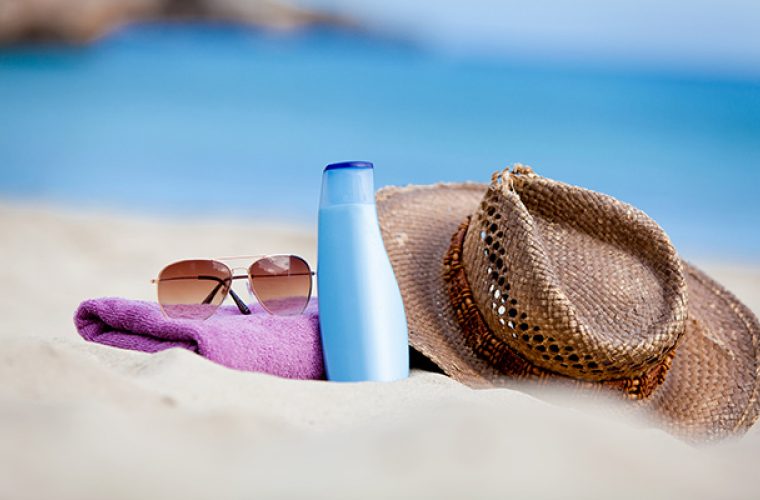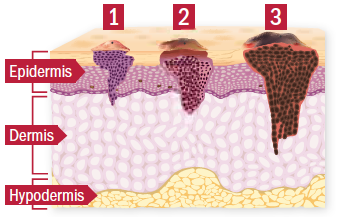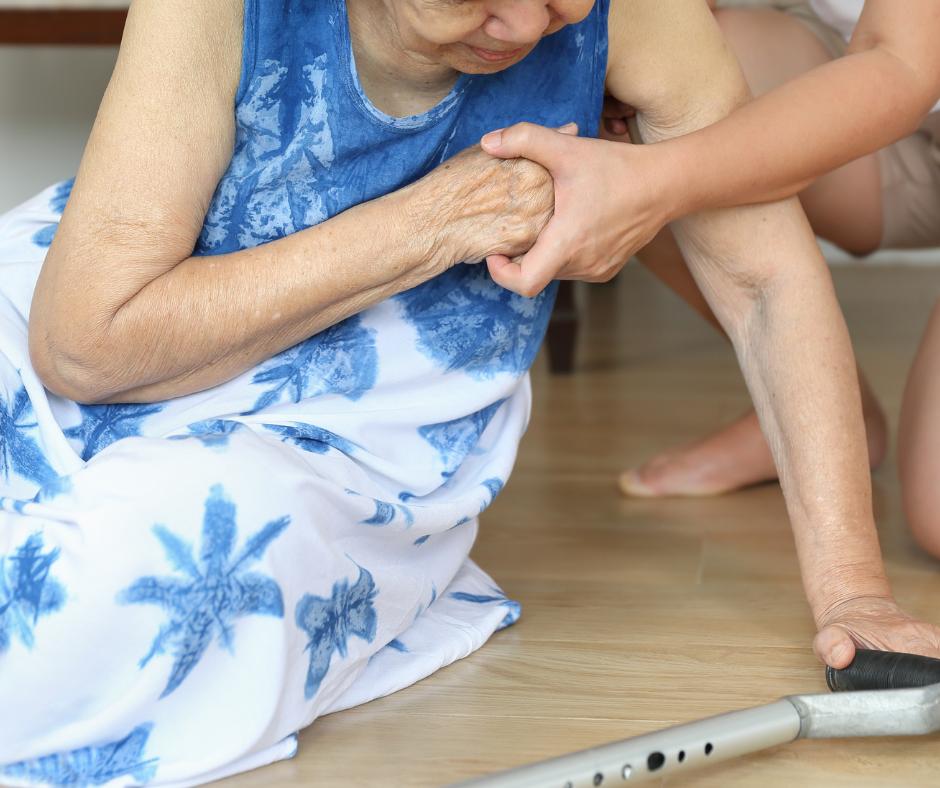
Skin cancer is an abnormal growth of skin cells, prevalent in areas with strong sun exposure. However, it can also form in parts of body protected from the sun. Interestingly, skin cancer is the most commonly diagnosed cancer in America, with more than five million people diagnosed each year. This could be because of sun overexposure during increasingly popular outdoor activities and recreational pursuits.
There are a few types of skin cancers, with the most common one being basal cell carcinoma (90 %), then squamous cell carcinoma and melanoma (1 %). Melanoma is the most dangerous type – it is the culprit for most skin cancer-related deaths. The differences between these skin cancers are the type of cell involved and the depth of skin penetration. Basal cell carcinoma involves the superficial layer; meanwhile squamous cell carcinoma and melanoma grow deeper into skin layer and may spread to other parts of the body.

Types of skin cancer: 1) Basal cell carcinoma, 2) Squamous cell carcinoma, 3) Melanoma (Source: Harvard Health)
Spot Skin Cancer
Each type of skin cancer has signs and symptoms unique to its own. Regardless, the recommendation is a monthly self-examination at home to inspect the moles on the body to detect skin changes for timely diagnosis and treatment. Generally, the appearance of the following signs would warrant further investigations:
- A mark on the body that stands out from the rest
- A sore that refuses to heal
- Redness or new swelling outside the border of a mole
- Itching, pain or tenderness in a mole
- Oozing, scaliness or bleeding in a mole
Besides that, the ABCDE Method is useful to check for melanoma:
- A: Asymmetry – Two halves of a mole that do not match.
- B: Border – Uneven border, especially if scalloped or notched.
- C: Colour – Different shades, including tan, brown, black, red, blue or white.
- D: Diameter – Larger than 6 mm.
- E: Evolving – Change in shape, colour or elevation from the skin; a mole may start to bleed, itch, or crust.
Precautions in the Sun
Overexposure to sunlight causes harmful effects on the skin, eyes and immune system. However, experts believe that 80 % of skin cancers could have been prevented with proper protection. Hence, adopting these simple steps can make a difference:
-
Avoid midday sun
The sun’s ultraviolet (UV) rays are the strongest and most harmful between 10 am and 4 pm. Therefore, it would be wise to limit sun exposure during this part of the day.
-
Use sunscreen
Apply sunscreen of SPF 15 and above, even on cloudy days. Use it at least 20 minutes before going out in the sun to allow the sunscreen to fully bind to skin. Remember to reapply sunscreen every two hours, especially after working, swimming, playing or exercising outdoors.
-
Wear protective gears
A wide brim hat protects eyes, ears and the back of neck. Choose sunglasses that provide 99 to 100 % UV protection to prevent eye damage from sun exposure. In addition, wear tightly woven, loose fitting clothes. Also, select clothing made from synthetic fibers, such as polyester, Lycra, nylon or acrylic, due to the ability to pull fibers close together.
-
Avoid sun lamps and tanning beds
Sun lamps, tanning beds or artificial lights are used to tan the skin. However, a tanned skin is the skin’s response to damaging UV rays. On top of that, unprotected eyes could also be harmed while tanning. Thus, it is advisable to avoid tanning equipment entirely.
Furthermore, always protect children from excess sun exposure. A child’s vital functions, such as the immune system, are not fully developed at birth. Hence, unsafe environments may interfere with their normal development. Besides that, childhood sunburns may increase the risk of melanoma later in life. Therefore, it is important to emphasise sun protection among children as well.
Conclusion
Skin cancer is usually caused by skin changes due to unprotected sun exposure. You prevent most skin cancers with proper sun protection. Hence, take precautions to avoid the harmful effects of UV. Additionally, do a monthly self-examination for any unusual changes on the skin to look out for early signs of skin cancer. If you or your loved ones notice any skin changes, consult a doctor today. Early diagnosis and treatment would make a huge difference.
Find a Dermatologist in Malaysia, on GetDoc
Find a Dermatologist in Singapore, on GetDoc
by Joanne Lee
Multipotentialite. Loves creating and seeing ideas come alive. View all articles by Joanne Lee.





